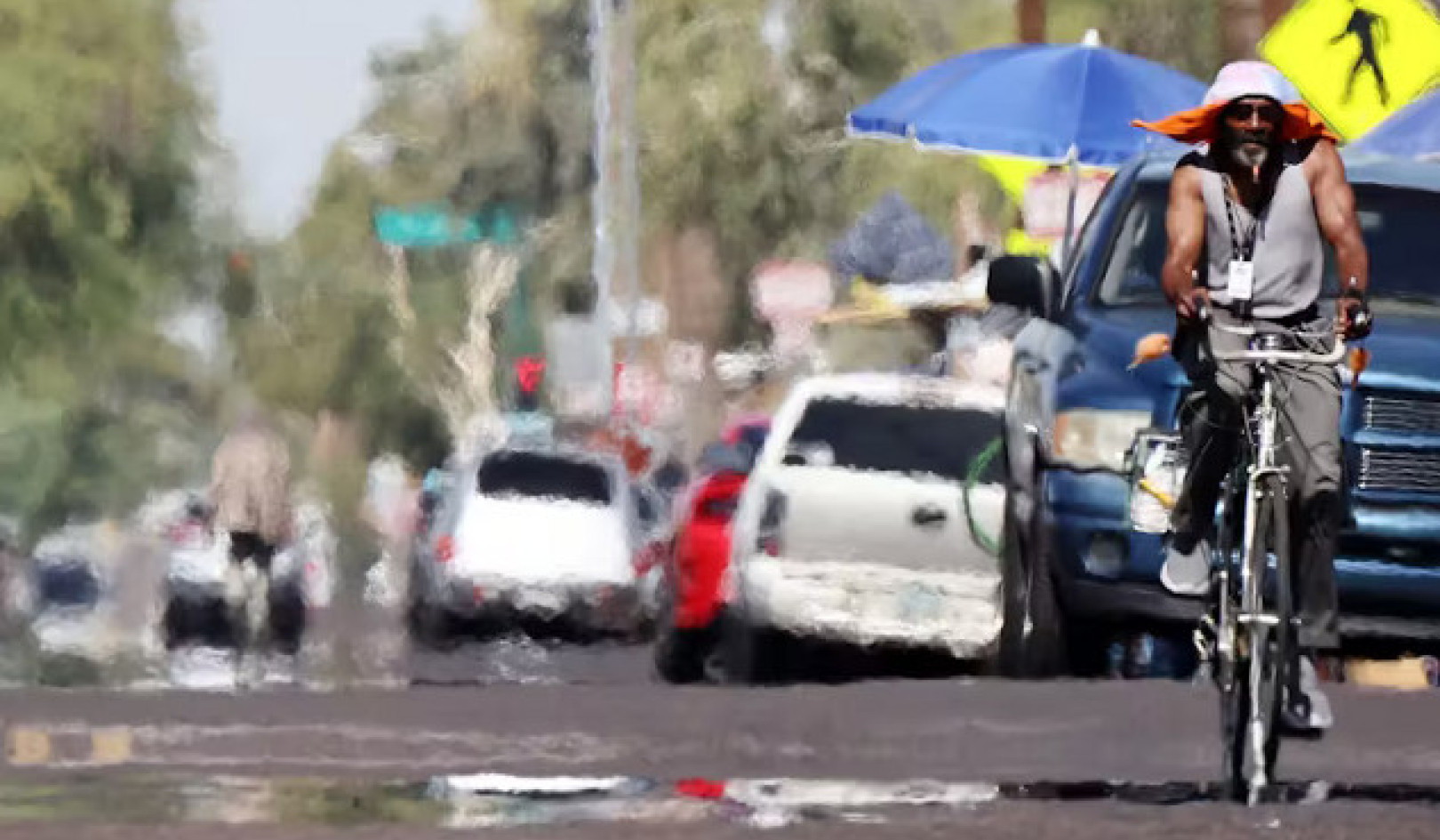
Composing a symphonic landscape: Caspar David Friedrich’s 1818 oil painting, Wanderer above the Sea of Fog. Wikimedia Commons
“He who climbs upon the highest mountains laughs at all tragic plays and tragic reality”, said the prophetic protagonist in the German philosopher Nietzsche’s Thus Spoke Zarathustra.
Richard Strauss, who had already produced an orchestral work inspired by that book, seemingly took this injunction to heart when composing An Alpine Symphony (1915), which despite the title is better considered as the last of his “tone poems”.
The eight earlier tone poems, single-movement orchestral pieces with titles and prefaces linking the music to literature or other subject matter, had made Strauss one of the most celebrated (and controversial) composers of his day. However, although he continued composing until his death in 1949, he concentrated thereafter on opera rather than orchestral music.
Consequently, An Alpine Symphony marks the end of an era, both for the composer and for German symphonic music more generally, because after the First World War big romantic works like this went severely out of fashion. Though this tone poem was completed while the horrors of war dominated the news, it does not suggest any awareness of its larger political or historical situation. Rather, An Alpine Symphony remained focused on the representation of a landscape through music.
Tragic inspirations
Strauss first began working on what would become An Alpine Symphony in 1900, under the title “Tragedy of an artist” - a reference to the suicide of Swiss-born painter Karl Stauffer-Bern. In the following decade he set the project aside and seemingly swapped orchestral composition for opera, achieving enormous success on stage with the scandalous Salome, and the still darker Elektra, before he turned back to more accessible musical fare with the waltz-filled Rosenkavalier.
The immediate impulse for Strauss’s return to An Alpine Symphony was the premature death in 1911 of his friend, the Austrian composer Gustav Mahler. Mahler too had bid farewell to the German symphonic tradition in his Ninth Symphony, which expires exquisitely into nothingness at the end of the fourth movement.
Gustav Mahler’s Symphony No.9.
Even when Strauss took up work on the project again, its name was still in flux. He envisaged calling it “The Antichrist” (after Nietzsche’s book of the same title), since it “represents moral purification through one’s own strength, liberation through work, [and] worship of eternal, magnificent nature”, as Strauss wrote on his diary in May 1911. But when this title was dropped in favour of An Alpine Symphony, the link to Nietzsche was obscured.
Man vs. wild
On the surface then, the final form of An Alpine Symphony is a sonic portrait of an unidentified protagonist successfully conquering a mountain. By this point in his career, Strauss was living at least part of the year in the southern Bavarian town of Garmisch (today Garmisch-Partenkirchen), within sight of Zugspitze, Germany’s highest peak. Strauss loved to go rambling in the alps.
The unbroken 50 minute tone poem contains 22 parts describing a variety of landscape features on the route to and from the mountain summit: the climber passes through the woods, by a stream, near a waterfall, across flowery meadows and pastureland, through thickets, and onto the glacier before reaching the top, each of these suggested by some sonic analogue.
Nature’s temporal and climatic changes are also prominent: the events of the day are bordered by sunrise and sunset, and the hiker encounters mist and a storm.
The composer’s customary skill at representing non-musical entities through music is on full display here: the waterfall is a particular highlight in its imaginative rendition of the water’s spray.
Strauss’ imaginative rendition of the water’s spray.
To suggest the sound of Bavarian mountain pastures, Strauss used cowbells – an instrument which had been memorably featured by Gustav Mahler in his Sixth Symphony.
The sound of Bavarian mountain pastures.
Beethoven’s Symphony no. 6 (known as the Pastoral symphony) is in some ways a precedent for Strauss’s work. Both compositions feature a brook, and later a violent storm followed by a beatific calm. Beethoven, however, claimed that his Symphony contained “more expression of feeling than painting”, and the title of his first movement (“Awakening of cheerful feelings upon arrival in the country”) bears out its focus on the emotional journey of experiencing the landscape, rather than on painting the landscape itself.
Strauss, on the other hand, wanted to represent nature in sound, but also to show the human protagonist who experiences it. In this sense, he goes beyond Beethoven in the boldness of his depictions.
The climber is introduced in the third section in a bold striding theme, which confidently traces a jagged ascending course – until it pulls up briefly a few bars later, as the climber runs out of breath.
Climbing the mountain.
This theme was actually modelled on an idea from the finale of Beethoven’s Fifth Symphony, although scholars only discovered this much later. Ingeniously, Strauss later flips his theme upside down as the mountaineer descends in haste through the storm.
The storm arrives.
In between, the climber manages to attain the summit. Here Strauss swaps landscape painting for evoking feelings of triumph that he himself would have experienced many times in his mountain wanderings.
Yet again, the opening of this new theme is a borrowing, this time from the second movement of German composer Max Bruch’s beloved Violin Concerto no. 1. Strauss freely reshapes this idea into a passage of sublime magnificence – symphonic music at its most monumental.
Playing with history
There are other, looser connections to earlier music. The opening of Strauss’s tone poem recalls the Prelude of Richard Wagner’s opera, Das Rheingold, the opening drama of his four-part Ring Cycle.
Both works start out from a place of quiet stillness, from which the music gradually grows in loudness and liveliness. The two composers were trying to represent nature in its most primal form, and the burgeoning of life that arises from it. Interestingly, when a teenage Strauss was caught out a storm in the mountains, he channelled the experience into an improvised piano composition: “naturally huge tone painting and smarminess à la Wagner”, the precocious 15-year-old wrote, being no fan of Wagner’s music at the time.
But by the time he wrote An Alpine Symphony, Strauss had been a card-carrying Wagnerian for many years. It is likely that this was a deliberate homage to the effect Wagner created – although the actual themes in both passages are quite different.
Yet another sort of allusion is found in the flowery meadows passage, where the accompanying plucked strings (“pizzicato”) and mellifluous string writing strongly recall a texture typical of German composer Johannes Brahms.
Brahms’ Academic Festival Overture conducted by American composer Leonard Bernstein.
Even Strauss’s earlier works are revisited: the explosion into life at the “Sunrise” in An Alpine Symphony is akin to one of his previous, and more famous, openings: the start of Also Sprach Zarathustra – where the prophet greets the sun. This passage has become iconic, thanks to its use in Stanley Kubrick’s 2001: A Space Odyssey.
Strauss’ Also Sprach Zarathustra makes for a memorable intro in 2001: A Space Odyssey.
And finally, the opening of An Alpine Symphony, with its slow descending scales, directly quotes from the start of Strauss’s much earlier F minor Symphony. Here, Strauss returns to his beginnings for what turned out to be his last major orchestral tone poem.
Down to earth
So what do all these borrowings and allusions signify? First, they cement the picture of Strauss as heir to the German music traditions. Before he decisively transferred his allegiance to Wagner, Strauss had undergone a brief Brahms infatuation, and this, too, had left its mark. Nonetheless, Strauss did not reproduce earlier ideas in a passive fashion in his Alpine Symphony. Rather, he transformed and reworked a wide range of source materials.
More radical still was Strauss’s larger agenda, where he parts company from his symphonic precursors. Since at least the time of Beethoven, the symphony had been treated as a semi-sacred genre. It was perceived to have metaphysical significance. The writer and critic E.T.A. Hoffmann expressed it thus in a famous review of Beethoven’s Fifth Symphony in 1810: “Music reveals to man an unknown realm, a world quite separate from the outer sensual world surrounding him.”
In recent decades, musicologists such as Charles Youmans have recognised that Strauss’s agenda in his orchestral compositions was deliberately at odds with this. He rejected these metaphysical pretensions, and his explicit tone-painting in works like An Alpine Symphony expresses a more grounded, earthly agenda. Nietzsche called in Also sprach Zarathustra for mankind to “remain true to the earth; do not believe those who speak to you of otherworldly hopes”. In nature, Strauss had found an earthly object that was worthy of worship.
A few decades later, Strauss envisaged writing one more tone poem called Der Donau (the Danube), a tribute to the Vienna Philharmonic Orchestra. But he never got further than the preliminary sketches.
An Alpine Symphony therefore remains his last substantial output within this arena. There are many ways to approach this work: we can rejoice in the sonic gorgeousness of its surface, or admire how cleverly Strauss has re-imagined of nature in musical terms, or hear in it a farewell to a tradition Strauss himself had subtly subverted.
It’s a more complex composition than it appears to be. And as it fades away enigmatically into nocturnal darkness, so too did a glorious chapter in German symphonic music pass with this work into history.
About The Author
David Larkin, Senior Lecturer in Musicology, University of Sydney
This article was originally published on The Conversation. Read the original article.
Related Books:
at InnerSelf Market and Amazon

























